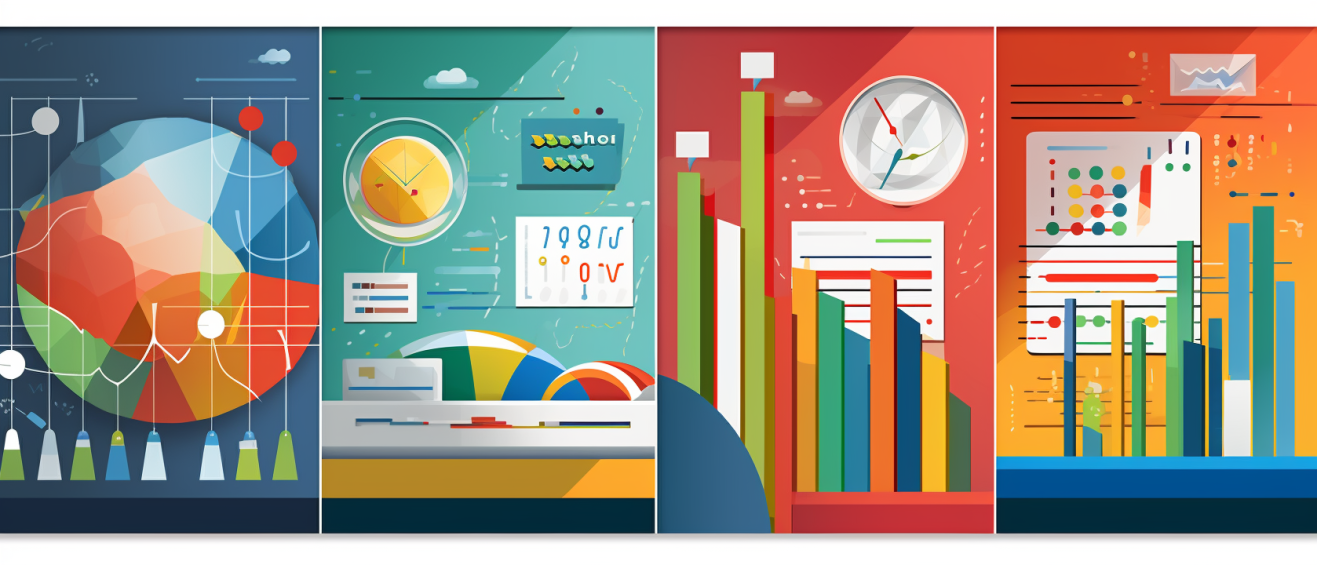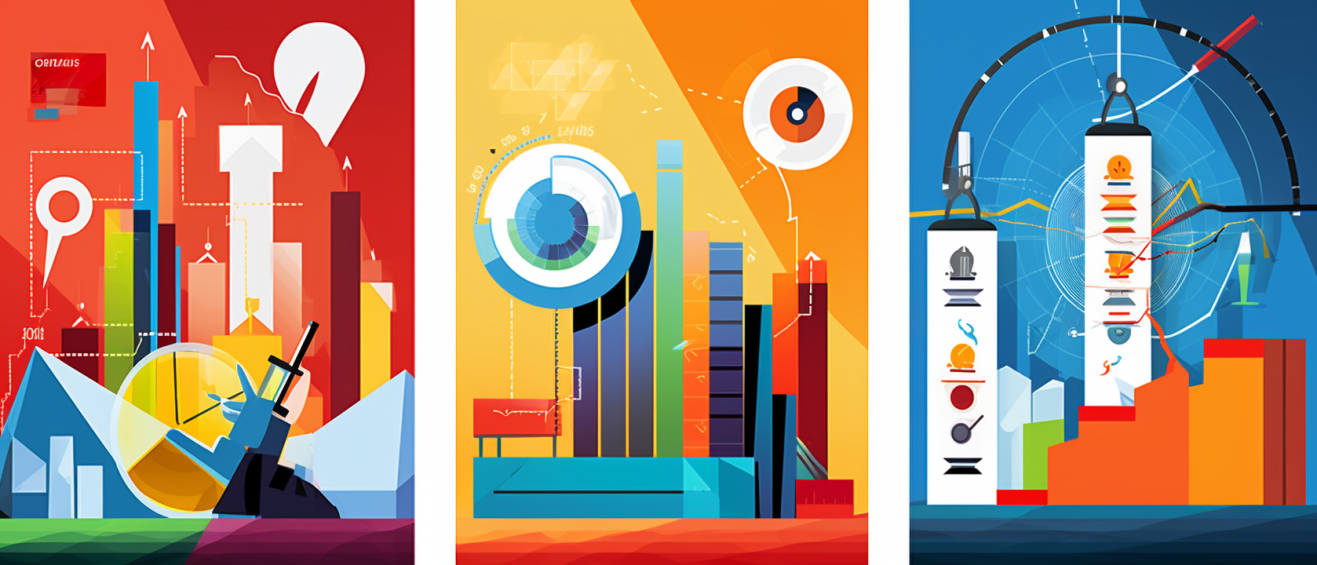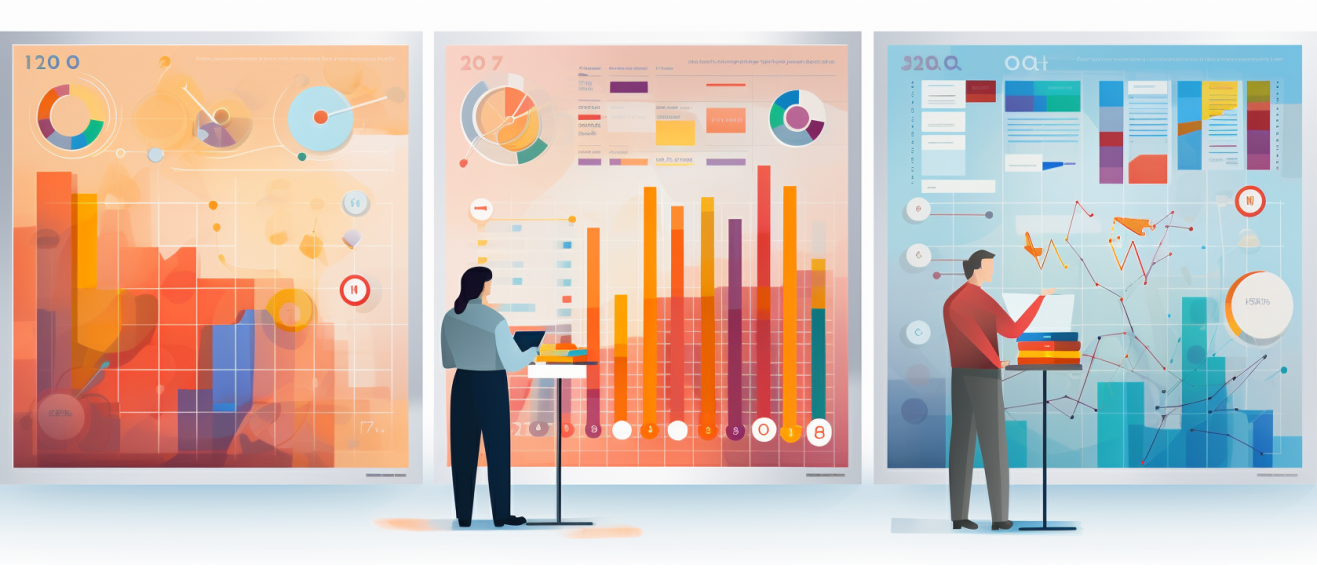Key Takeaways
✅ Descriptive analytics focuses on summarizing past marketing performance and behaviors to understand what happened and why, using data visualization and tracking metrics.
✅ Predictive analytics uses statistical models and forecasting techniques to identify future trends and customer behaviors, helping marketers anticipate market changes and customer needs.
✅ Prescriptive analytics provides actionable recommendations and decision options based on data-driven insights to optimize marketing strategies and outcomes.
Introduction
Have you ever felt like you're juggling numbers, trying to make sense of countless charts and graphs, only to end up more confused about your marketing efforts? Marketing analytics may seem like a dense forest of data, but what if you could find that hidden path that leads to clarity and success? That's exactly what understanding the three essential analytics types can do for you. It's like suddenly having a map, a compass, and a clear destination in the landscape of your marketing campaigns.
Let's be clear, the goal here isn't just about crunching numbers; it's about embracing data to make your marketing resonate with people and their desires. With descriptive analytics, you'll get a clear picture of what's worked in the past. Ever wonder why certain campaigns soared while others flopped? Diagnostic analytics digs into that big question. And for the crystal ball everyone wishes they had, there's predictive analytics - that forward-looking insight allowing you to make moves with confidence.
But wait, there's more. If forecasting is good, then knowing the exact steps to take is fantastic, and that's where prescriptive analytics comes into play. This guide will not only reveal each type's secrets, but it'll show you how to blend them into a potent potion for marketing success that can enhance your revenue, boost your return on ad spend (ROAS), and maximize your return on investment (ROI).
Sit tight as we unwrap some eye-opening insights and avant-garde strategies that will redefine how you interact with your data. You're about to embark on a journey towards harnessing the full potential of your marketing analytics, and trust me, the destination is worth every step.
Top Statistics
| Statistic | Insight |
|---|---|
| Descriptive Analytics Usage: Over 74% of businesses use descriptive analytics for understanding customer behavior. (Source: Forrester Research, 2021) |
While many companies gather data, only about 39% really put it to work for them. Knowing what's happened gives a foundation to improve, but it's in the action where real growth happens. |
| Predictive Analytics Market Growth: Valued at $8.5 billion in 2020 with a projection of $21.5 billion by 2026. (Source: MarketsandMarkets, 2021 | This significant growth isn't just a number – it's a sign that foresight is valuable. Being able to predict and plan for future trends can separate the winners from the rest. |
| Investment in Predictive Modeling Post-COVID: 56% of companies have increased their spending here. (Source: Deloitte, 2021) | Pandemic times taught many businesses a lesson: adapt or fall behind. Those who can look ahead and re-strategize are the ones staying afloat and thriving. |
| Effectiveness of Prescriptive Analytics: Can improve decision-making effectiveness by up to 50%. (Source: Gartner, 2019) | Imagine enhancing your decision-making by half. That's the power of prescriptive analytics – it's like seeing into a crystal ball and getting advice on what to do next. |
| Real-Time Prescriptive Analytics Impact: Companies using it are twice as likely to exceed revenue targets. (Source: Forbes Insight & Quantum Metric, 2020) | In the fast-paced business world, acting at the right moment is everything. Those who can make swift and informed decisions not only hit their marks – they often soar right past them. |
The Role of Descriptive Analytics in Marketing
Have you ever flipped through old photos and realized how much they tell about your story? Descriptive analytics is a bit like that – it's looking back at the snapshots of your business history. You'll see patterns like the spike in traffic after a major campaign or the dip in sales when a new competitor hit the market. It's counting everything, from website visitors to items sold, and gives you a base to work from. What's crucial here is to ask yourself: What patterns do I see? Once you've got that figured out, you can start to think about what those patterns mean for your future moves.
Digging Deeper with Diagnostic Analytics
Now, imagine you've got a mystery on your hands. Your sales dipped this month, but why? Diagnostic analytics is about putting on your detective hat and sifting through the clues. You'll look into every interaction, every review, and every social media mention to find out the cause. Is it a new competitor, a product issue, or maybe just a seasonal change? It's like a puzzle where each piece is a bit of data that brings you closer to the "Aha!" moment. So, when you see something odd or unexpected in your numbers, make sure you stop and ask: Why did this happen?
Forecasting the Future with Predictive Analytics
Now, who hasn't wished they could see into the future? With predictive analytics, it's almost as if you can. By analyzing past behaviors and patterns, you can forecast potential outcomes. Think of it this way: if people who bought running shoes often buy sports drinks a month later, you might start recommending sports drinks to everyone who buys running shoes. That's smart marketing! But remember, it's only an educated guess. The big question you should keep in mind here is: What might happen next and how can I prepare for it?

Charting Your Course with Prescriptive Analytics
Alright, you've looked back with descriptive analytics, asked "why" with diagnostic analytics, and peered ahead with predictive analytics. Now what? Enter prescriptive analytics, the ultimate decision-maker's tool. This is where you take all you've learned and turn it into a strategic action plan. It combines historical data with your detective work and forecasts to recommend the next steps. Should you adjust your marketing strategy or change your product line-up? That's what prescriptive analytics will help you decide. It's like sitting down at the map and plotting your course with calculated precision. Always focus on the critical question: What should I do right now to shape the best future for my business?
AI Marketing Engineers Recommendation
Recommendation 1: Leverage Descriptive Analytics for Real-Time Social Media Monitoring: Start by setting up a social media dashboard that tracks mentions, engagement rates, and audience sentiment. Use this data to see what people are saying about your brand right now. What kind of conversations are you a part of? Are customers happy, or are they voicing concerns you need to address? Keep it simple; social listening isn't just about numbers. It’s about the stories behind those thumbs ups, hearts, and comments.
Recommendation 2: Employ Predictive Analytics to Stay Ahead of Market Trends: Dig into your data and work with machine learning algorithms that can forecast upcoming trends based on your historical data and broader market indicators. Have you noticed a sudden spike in certain product interests? Maybe there’s a pattern that shows every spring, a certain item in your line-up gets more attention. Use that insight! Get your stock ready, plan your marketing campaigns, and get ahead of the curve. Staying proactive rather than reactive can be the difference between leading the pack and playing catch-up.
Recommendation 3: Utilize Prescriptive Analytics to Optimize Ad Spend and Channel Strategy: This is all about making your dollar work smarter, not harder. Implement tools like Google Analytics, AdWords Performance Grader, or Facebook's Ad Manager to get recommendations on where you should put your money. Are you pouring too much into a channel that's not giving back? These tools can tell you. They can also suggest tweaks to your targeting to reach the right eyes at the right times. Plus, this isn't just a one-off thing; it’s a loop. You try, you measure, you adjust. And your business grows smarter.
Conclusion
Now that we've journeyed through the rich landscape of marketing analytics, you might be wondering how all this stuff impacts you, right? Well, let me tell you, whether you're running a small business from your kitchen table or you're at the helm of a sprawling corporation, these insights are like gold.
Descriptive analytics gives you the lowdown on what’s been happening – the raw story of your past efforts. Did that summer sale actually get people clicking 'buy now'? Diagnostic analytics comes in like a detective, with a magnifying glass, asking "why did or didn't it work?". It digs into the causes and uncovers hidden gems about your customers’ behaviors.
Then there's predictive analytics – your crystal ball into the future, giving you a sneak peek at potential trends. It's like having insider info on which way the wind's blowing in the market. And let’s not forget prescriptive analytics! It’s like your wise old aunt who not only tells you what’s going wrong but hands you the recipe to fix it.
Imagine blending all three and you've got a roadmap of informed decisions leading to growth. You're no longer throwing darts in the dark; you're hitting bullseyes because you know where the target is, and even better, you know why it’s there.
So, are you all set to put these tools to work and give your business the edge it deserves? By integrating descriptive, diagnostic, and predictive analytics, you'll likely take your marketing game to levels you never dreamed of. And isn't that the hope we all have – to watch our hard work blossom into success?
Keep these analytics in your toolkit and never stop asking those crucial questions. What's happening? Why is it happening? What can I expect, and how can I make it better? Answer these, and you're not just playing the game – you're changing it.

FAQs
Question 1: What are the three main types of marketing analytics?
Answer: Marketing analytics can be divided into three main types. Descriptive Analytics gives you a summary of past data to see what's happened before. Predictive Analytics uses various methods to guess what might happen in the future. Prescriptive Analytics goes even further by not only predicting the future but also advising on the best actions to take based on those predictions.
Question 2: How do these types of marketing analytics differ from each other?
Answer: Each type has its unique focus. Descriptive Analytics looks back at the past, Predictive Analytics aims to foresee what could happen next, and Prescriptive Analytics provides advice on what steps to take to achieve the best possible outcome.
Question 3: Which type of marketing analytics should I focus on as an enthusiast or professional?
Answer: When you're just getting started, it's good to get a grip on the basics of all three analytics types. Over time, you'll likely find that you gravitate toward specializing in one area based on what you enjoy and where your skills lie. But remember, professionals often find themselves working with different teams that use all types of analytics. It's all about collaboration!
Question 4: How can descriptive analytics benefit my business?
Answer: Descriptive analytics can shine a light on what's happened in your business in the past. It can help you spot trends and patterns, figure out what’s working well, and see where there's room for improvement, all of which can guide your future business decisions.
Question 5: What are some common predictive models used in marketing analytics?
Answer: There are quite a few models like regression analysis, clustering algorithms, decision trees, neural networks, and time series forecasting. Each has its own pros and cons, so you need to choose wisely depending on what you need to figure out.
Question 6: Can prescriptive analytics be applied across various marketing channels?
Answer: Yes! Prescriptive analytics can be a game-changer across different channels like social media, email campaigns, and content marketing, to name a few. It can help work out the best way to reach and engage with customers, potentially leading to a better return on investment and happier customers.
Question 7: What sources should I consult to learn more about these types of marketing analytics?
Answer: If you want to dive deeper, look into academic journals, industry reports from big companies like McKinsey & Company or Deloitte, and practical books. Also, online platforms offering courses and certifications can offer hands-on experience and knowledge.

Academic References
- Winston, W. L. (2017). Marketing analytics: A practitioner's guide to marketing analytics and research methods. Pearson Education India. This significant tome unwraps the world of marketing analytics by breaking it down into three primary categories: descriptive, predictive, and prescriptive. Winston offers insight into understanding past performance, forecasting future trends, and optimizing decisions through various analytical methods.
- Dixit, S. K., Bharati, P., & Nath, V. (2018). The role of big data in marketing: A study of three major types of analytics. International Journal of Engineering Technology Science and Research, 5(4), 369-376. In this key article, the researchers talk about the giant leap big data has brought to marketing strategies and the combined power of different analytics types. They focus on how insights distilled from big data can lead to better decision-making and enhanced customer experiences.
- Roy, R., & Shankar, R. (2019). An overview of marketing analytics: concepts, techniques, and applications in market segmentation, consumer behavior, and social media marketing. In Handbook of Research on Contemporary Approaches in Management and Organizational Strategy (pp. 30-60). IGI Global. Roy and Shankar's work is a treasure trove for marketing professionals, offering a comprehensive review of analytic techniques applied in domains such as market segmentation and social media. They argue for the necessity of collaboration across functions to harness the full spectrum of benefits from marketing analytics.









